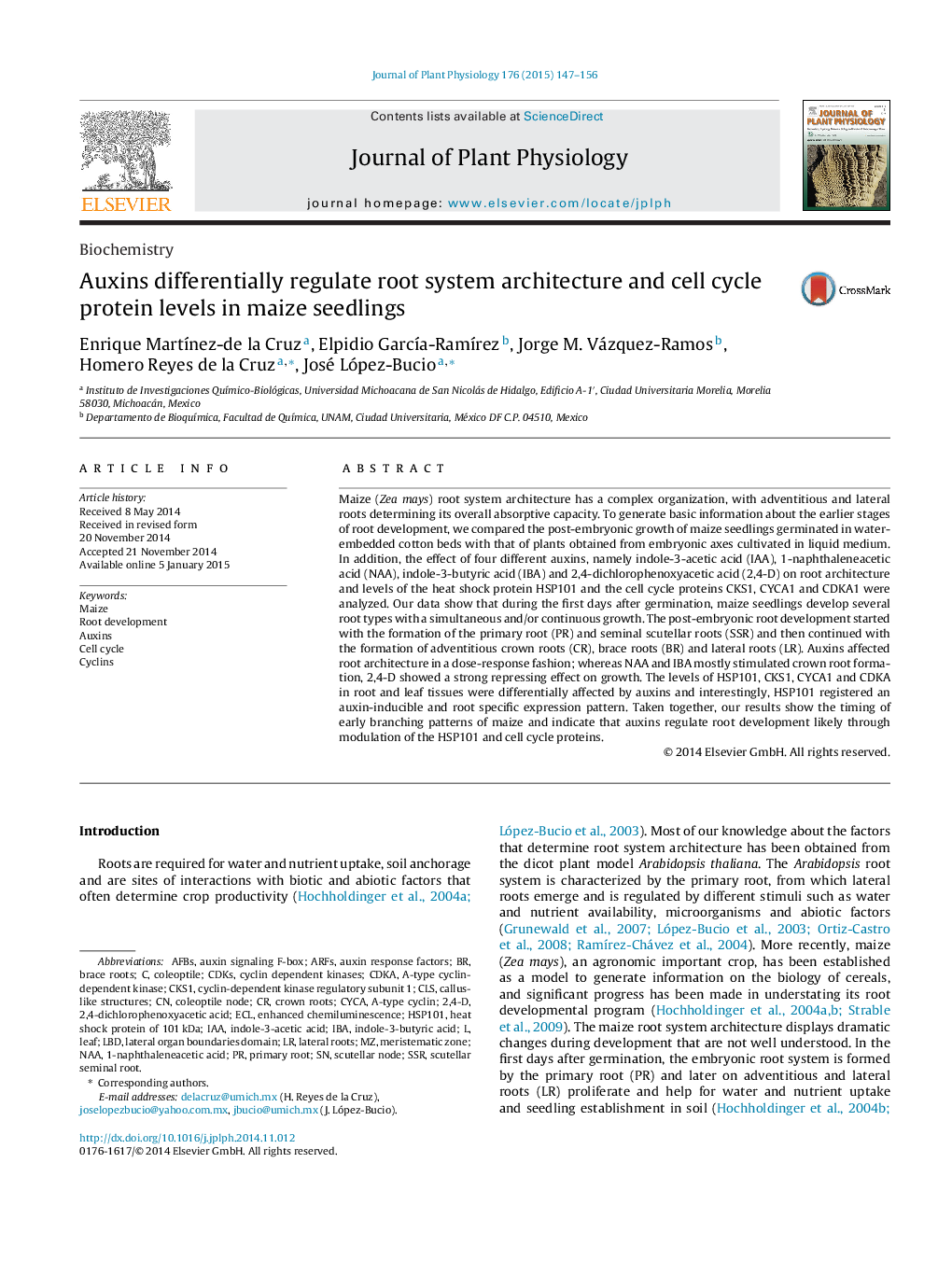| کد مقاله | کد نشریه | سال انتشار | مقاله انگلیسی | نسخه تمام متن |
|---|---|---|---|---|
| 8387466 | 1543900 | 2015 | 10 صفحه PDF | دانلود رایگان |
عنوان انگلیسی مقاله ISI
Auxins differentially regulate root system architecture and cell cycle protein levels in maize seedlings
ترجمه فارسی عنوان
اکسین به طور متناوب معماری ریشه ها و پروتئین های سلولی در نهال های ذرت را تنظیم می کند
دانلود مقاله + سفارش ترجمه
دانلود مقاله ISI انگلیسی
رایگان برای ایرانیان
کلمات کلیدی
SSRColeoptileLBDCKS1IAACycACLSNaAECLIBA1-naphthaleneacetic acid - 1-نفتالین اسیدهای اسید2,4-D - 2،4-D2,4-dichlorophenoxyacetic acid - 2،4-dichlorophenoxyacetic اسیدCDKs - CDK هاindole-3-butyric acid - اسید Indole-3-Butyricindole-3-acetic acid - اسید Indole-3-استیکAuxins - اکسینLeaf - برگenhanced chemiluminescence - بهبود شیمیایی لومنRoot development - توسعه ریشهMaize - ذرت یا جواریprimary root - ریشه اصلیLateral roots - ریشه های جانبیCyclins - سیکلین هاauxin response factors - عوامل پاسخ اکسینArfs - وراثتCell cycle - چرخه سلولیcyclin dependent kinases - کیناز وابسته به سیکلین
موضوعات مرتبط
علوم زیستی و بیوفناوری
علوم کشاورزی و بیولوژیک
علوم زراعت و اصلاح نباتات
چکیده انگلیسی
Maize (Zea mays) root system architecture has a complex organization, with adventitious and lateral roots determining its overall absorptive capacity. To generate basic information about the earlier stages of root development, we compared the post-embryonic growth of maize seedlings germinated in water-embedded cotton beds with that of plants obtained from embryonic axes cultivated in liquid medium. In addition, the effect of four different auxins, namely indole-3-acetic acid (IAA), 1-naphthaleneacetic acid (NAA), indole-3-butyric acid (IBA) and 2,4-dichlorophenoxyacetic acid (2,4-D) on root architecture and levels of the heat shock protein HSP101 and the cell cycle proteins CKS1, CYCA1 and CDKA1 were analyzed. Our data show that during the first days after germination, maize seedlings develop several root types with a simultaneous and/or continuous growth. The post-embryonic root development started with the formation of the primary root (PR) and seminal scutellar roots (SSR) and then continued with the formation of adventitious crown roots (CR), brace roots (BR) and lateral roots (LR). Auxins affected root architecture in a dose-response fashion; whereas NAA and IBA mostly stimulated crown root formation, 2,4-D showed a strong repressing effect on growth. The levels of HSP101, CKS1, CYCA1 and CDKA in root and leaf tissues were differentially affected by auxins and interestingly, HSP101 registered an auxin-inducible and root specific expression pattern. Taken together, our results show the timing of early branching patterns of maize and indicate that auxins regulate root development likely through modulation of the HSP101 and cell cycle proteins.
ناشر
Database: Elsevier - ScienceDirect (ساینس دایرکت)
Journal: Journal of Plant Physiology - Volume 176, 15 March 2015, Pages 147-156
Journal: Journal of Plant Physiology - Volume 176, 15 March 2015, Pages 147-156
نویسندگان
Enrique MartÃnez-de la Cruz, Elpidio GarcÃa-RamÃrez, Jorge M. Vázquez-Ramos, Homero Reyes de la Cruz, José López-Bucio,
